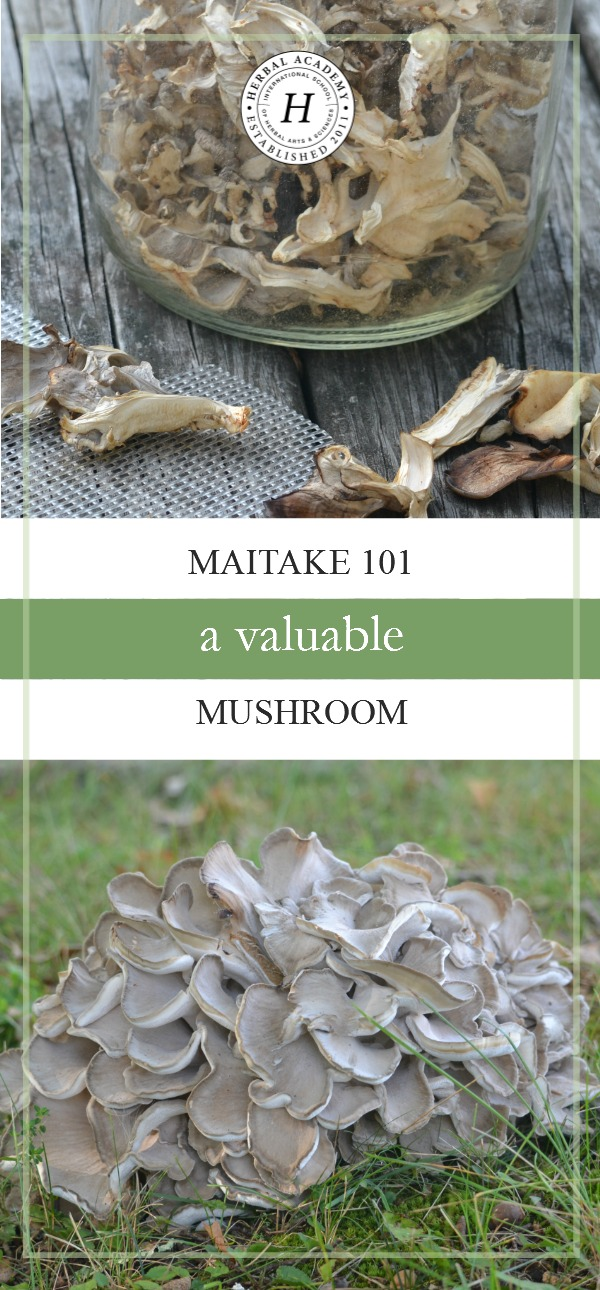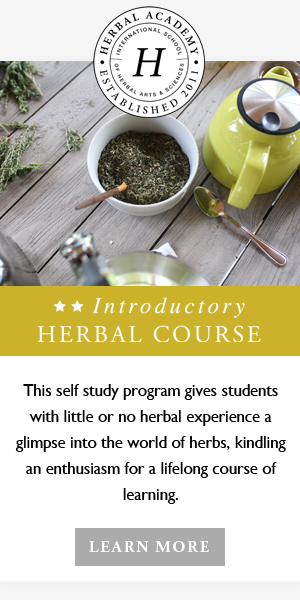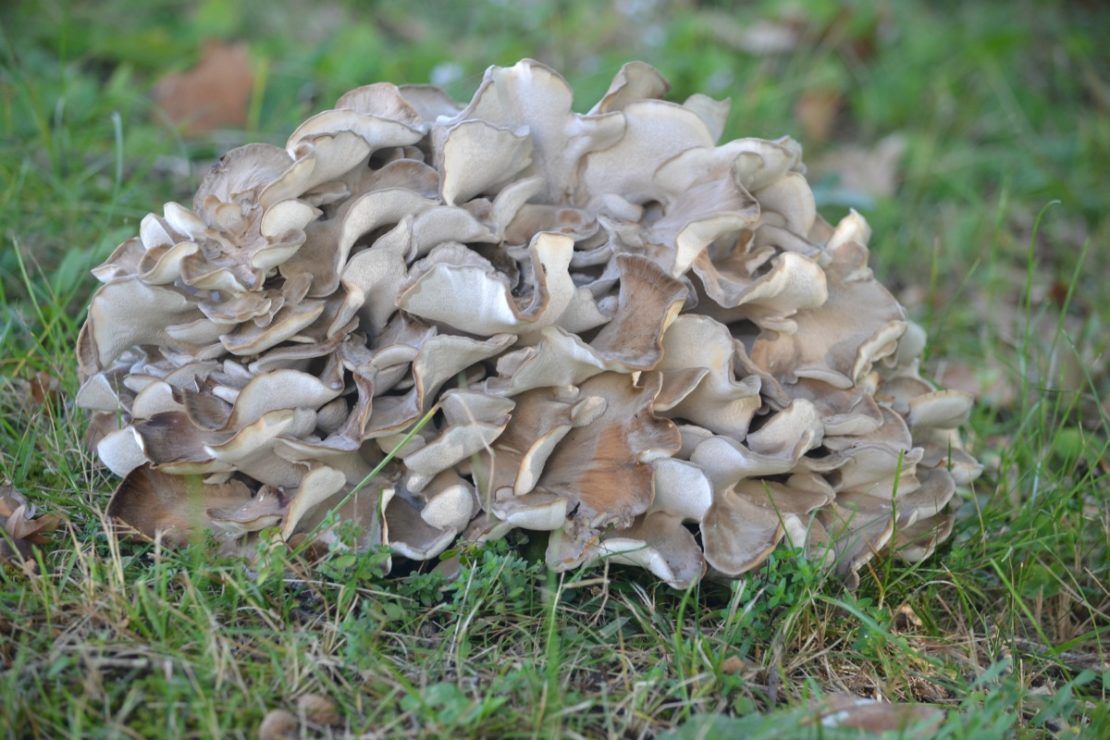
Maitake 101: A Valuable Mushroom (+ Maitake Barley Risotto Recipe!)
Early October in New England means many things: cool and sunny days, peak fall color, crisp apples, and icy cold cider come to mind, for starters. More obscure but no less exciting (for some of us)—it’s maitake time.
Maitake what? Maitake mushrooms, also called hen-of-the-woods, or Grifola frondosa. If we’ve gotten enough precipitation in late summer, these marvelous mushrooms start popping up around the big old oak tree in our yard in mid-September.
Finding Maitake
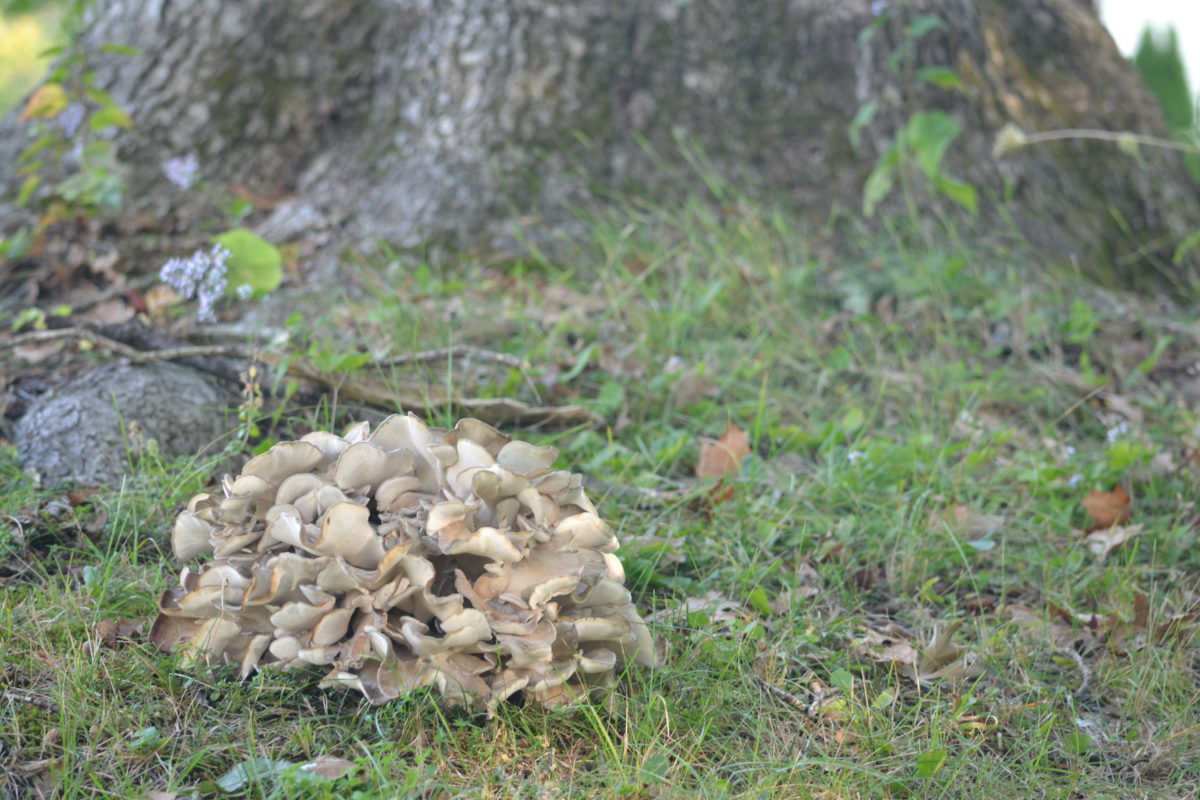
Maitake mushrooms grow in temperate hardwood forests where they feed upon the dead roots of older trees, in particular oaks but also elms and occasionally maples (Stamets, 2013). They are polypore mushrooms, meaning they have pores or tubes on the underside, as opposed to gills. Maitake grow as masses of small brownish-gray, fan-shaped caps fused onto a single, branching stalk. Hobbs (1998) describes poetically that the “fan-shaped fruiting bodies overlap like butterflies in a wild dance,” also noting that they earned their hen-of-the-woods moniker because they look a chicken with her feathers all fluffed up. Really fluffed up—maitake can easily reach a foot in diameter, and some are 20 pounds or more!
I first learned about maitake not in a wild food foraging class like one might expect, but in a rather alarming fashion one day while I was out playing in the yard with my kids. A pickup truck came screeching up next to our oak tree and a man brandishing a large knife hopped out and walked into our yard. It took a few verbal exchanges to establish that he was not actually there to do us harm but was actually a lovely Italian-American gentleman on his annual maitake mushroom hunt. He was from a neighborhood near Boston and ventured out to rural Massachusetts each autumn to harvest maitakes to sell to Boston restaurants (for a pretty penny, I might add).
He graciously conceded harvesting privileges but not before leaving us with some cooking tips—when I suggested sauteeing the mushroom in butter, he said “Yes, but I’d use olive oil, of course.” Now each year we look forward eagerly to the first week in October.
(Note: We did do our research before consuming these mushrooms! It is advised to consult a knowledgeable mycologist and multiple identification guides before harvesting and consuming any mushrooms to be absolutely certain they are edible.)
Maitake Mushrooms for Dinner
For starters, maitake mushrooms are completely delicious, and I don’t even really like mushrooms. They are hearty, buttery, and earthy without being overwhelmingly mushroomy. I saute them with garlic and onions, and eat them directly or enjoy with pasta. Because the harvest is often so abundant, I dry them in the food dehydrator and enjoy them in broths and soups all year round. Perhaps my favorite way to enjoy these beauties is in barley “risotto.”
5-6 cups water or vegetable stock Maitake mushroom is something we eat as a family because it’s good, delicious food that we can harvest locally. It’s high in protein, B vitamins, potassium, and fiber (Stamets, 2013).
Maitake and other mushrooms such as shiitake and reishi are often studied and touted for their immune regulating (immunomodulatory), immune activating (immunostimulatory), and anti-cancer actions, which are attributed to beta-glucans, a carbohydrate present in their cell walls (Hobbs, 2014). Due to mushrooms’ pathogenic nature, human immune systems have developed to recognize these beta-glucans and mobilize an immune response; fortunately, not all mushrooms are pathogenic to humans, so we can eat those safely while also benefiting from their effect on our immune system (Hobbs, 2014; Batbayer et al., 2012)!
Two of the most recent studies on maitake as an anti-cancer agent demonstrated the anti-tumor effect of the D-fraction of beta-glucans on breast tumor cells (Alonso et al., 2017) and breast cancer cell apoptosis (cell death) due to maitake polysaccharides (Zhang et al., 2017). A short clinical study with 32 breast cancer patients indicated the immunomodulatory effect of a maitake extract (Deng et al., 2009). A small study with 10 cancer patients administered maitake D-fraction without anticancer drugs and found that it slowed tumor growth and increased natural killer cell activity (Kodama et al., 2003).
Maitake is also shown in several studies to modulate blood glucose levels and can be useful in the case of hyperglycemia and Type 2 diabetes (Stamets, 2013). It has also been shown to reduce cholesterol levels (Winston & Kuhn, 2008).
One way to ingest maitake is by enjoying it in foods, as mushrooms are an excellent addition to a well-balanced and nourishing diet. For more therapeutic use, Hobbs (2014) recommends taking mushrooms via a water-based extract or micropowder, as the beta-glucans are not soluble in alcohol. A simple decoction can be drunk or used in broth, or a double extraction can be prepared to extract both the water and alcohol-soluble constituents. Of course, if you have been diagnosed with cancer or diabetes you should speak with your doctor before integrating maitake into your regimen.
I consider myself lucky to have this incredible mushroom take up residence under my oak tree each autumn, and while I use it primarily for food, I count it as a valued member of my local materia medica. After all, the food we eat provides the foundation for our wellness!
REFERENCES
Alonso, E.N., Ferronato, M.J., Gandini, N.A., Fermento, M.E., Obiol, D.J., Lopez Romero, A., Arévalo, J., Villegas, M.E., Facchinetti, M.M., Curino, A.C. (2017). Antitumoral effects of D-fraction from Grifola frondosa (maitake) mushroom in breast cancer. Nutrition and Cancer, 69, 29–43. http://dx.doi.org/10.1080/01635581.2017.1247891
Batbayar, S., Lee, D. H., & Kim, H. W. (2012). Immunomodulation of Fungal β-Glucan in Host Defense Signaling by Dectin-1. Biomolecules & Therapeutics, 20(5), 433–445. http://doi.org/10.4062/biomolther.2012.20.5.433
Deng, G., Lin, H., Seidman, A., Fornier, M., D’Andrea, G., Wesa, K., … Cassileth, B. (2009). A phase I/II trial of a polysaccharide extract from Grifola frondosa (Maitake mushroom) in breast cancer patients: immunological effects. Journal of Cancer Research and Clinical Oncology, 135(9), 1215–1221. http://doi.org/10.1007/s00432-009-0562-z
Hobbs, C. (2014). Mushroom medicine: Challenges and potential. Retrieved from http://www.christopherhobbs.com/library/featured-articles/mushroom-medicine-challenges-and-potential/
Hobbs, C. (1998). Medicinal mushrooms II. Retrieved from http://www.christopherhobbs.com/library/articles-on-herbs-and-health/medicinal-mushrooms-2/
Kodama, N., Komuta, K., and Nanba, H. (2003). Effect of Maitake (Grifola frondosa) D-Fraction on the activation of NK cells in cancer patients. Journal of Medicinal Food, 6, 371–377. doi: 10.1089/109662003772519949
Stamets, P. (2013). Maitake: The magnificent “dancing” mushroom. Retrieved from http://www.huffingtonpost.com/paul-stamets/maitake-mushroom_b_2908332.html
Winston, D. & Kuhn, M. (2008). Winston & Kuhn’s herbal therapy & supplements. New York: Wolters Kluwer Health.
Zhang, Y., Sun, D., Meng, Q., Guo, W., Chen, Q., & Zhang, Y. (2017). Grifola frondosa polysaccharides induce breast cancer cell apoptosis via the mitochondrial-dependent apoptotic pathway. International Journal of Molecular Medicine, 40, 1089-1095. https://doi.org/10.3892/ijmm.2017.3081
Maitake Barley Risotto
1 tablespoon butter
4 shallots, minced
2 garlic cloves, minced
1-1/2 cups maitake (or shiitake) mushroom caps, sliced thin
1 large carrot, diced fine
1-1/2 cups pearled or hulled barley
1 teaspoon salt (or more, to taste)
1/2 cup grated parmesan cheese
1/2 cup chopped parsley
black pepper to taste
a squeeze of lemon
Maitake Mushroom Health Benefits
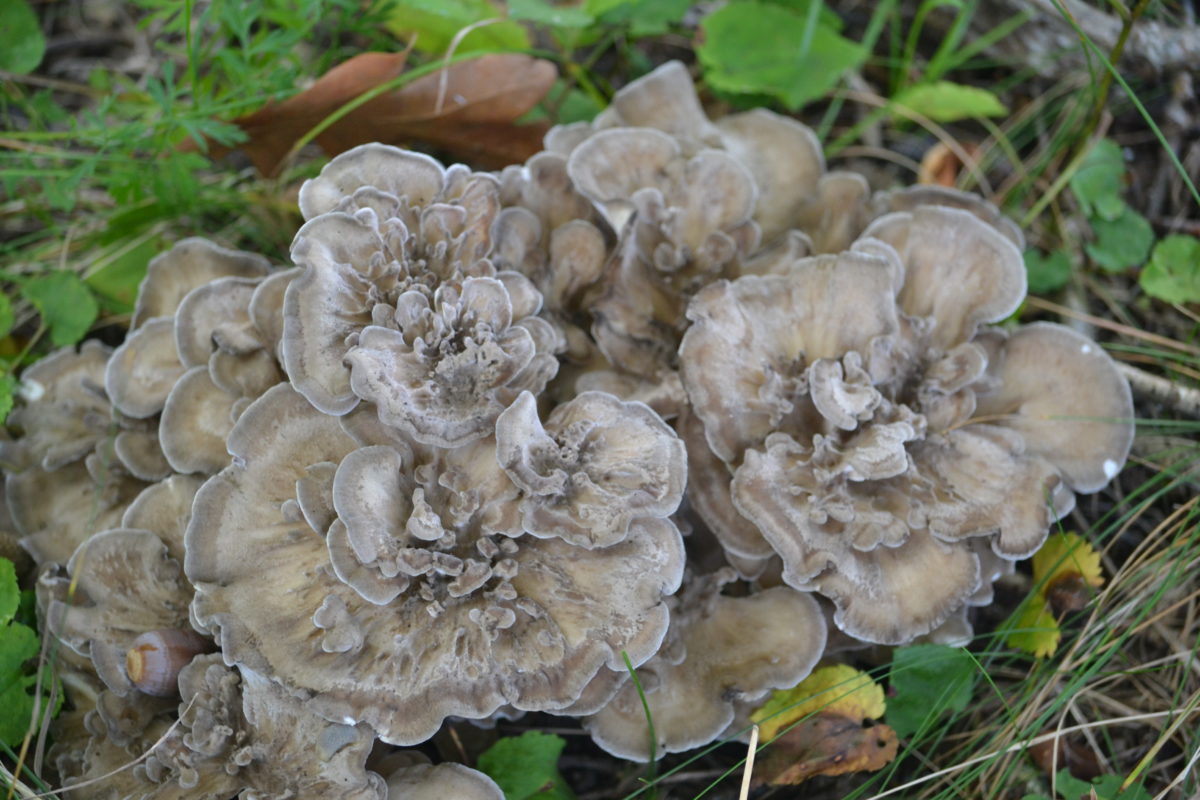
How to Take Maitake
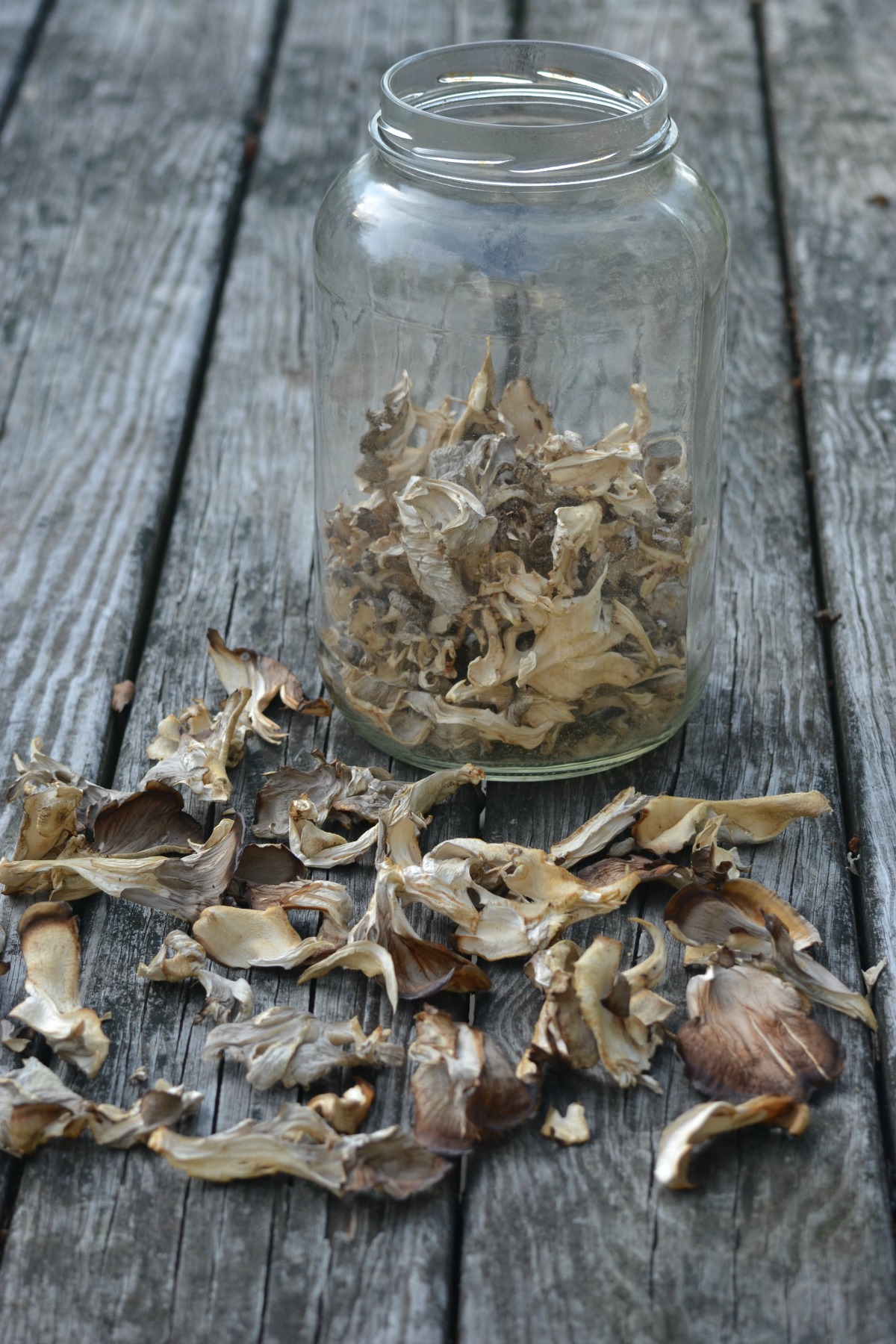
Start Building your Materia Medica with these free pages!
